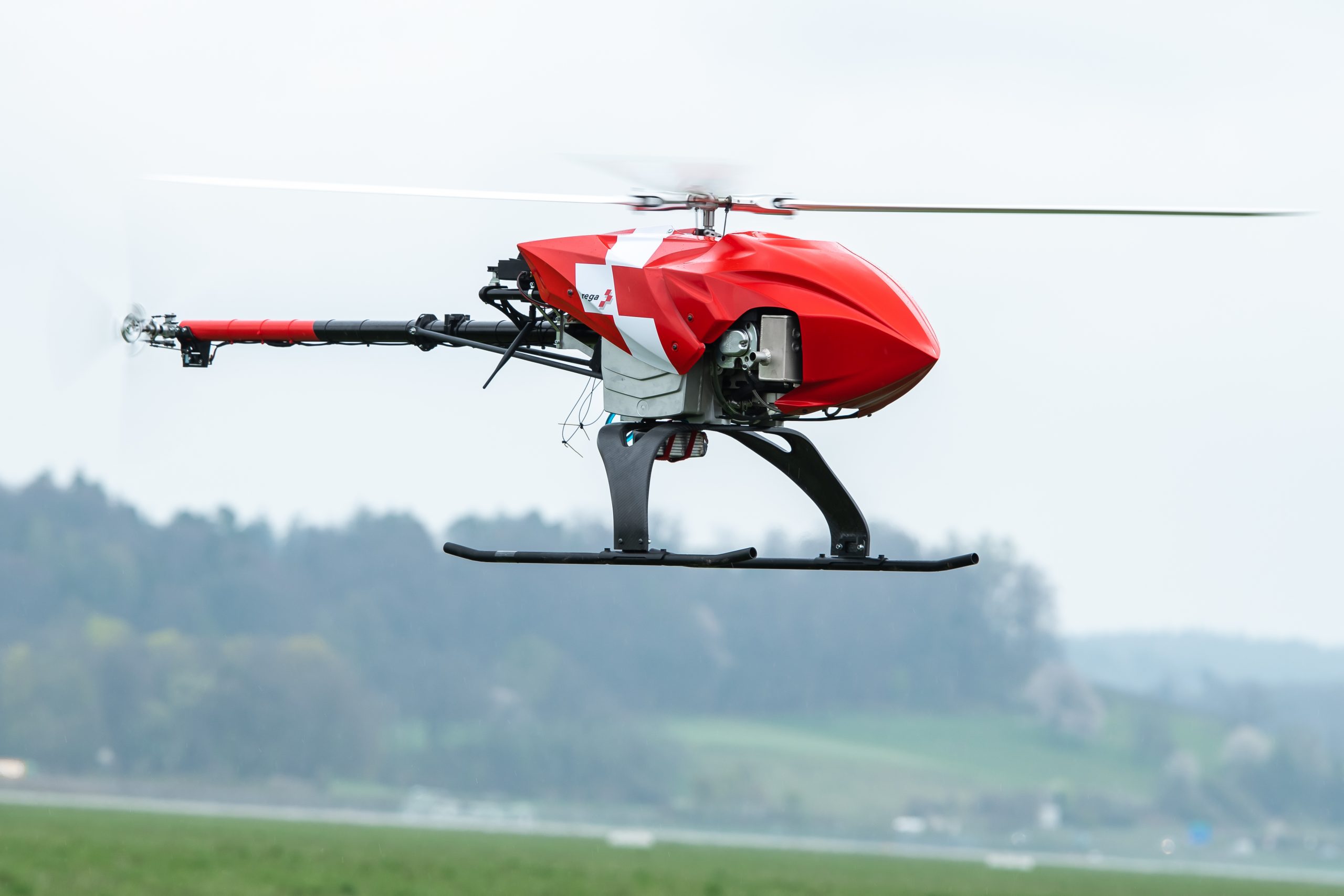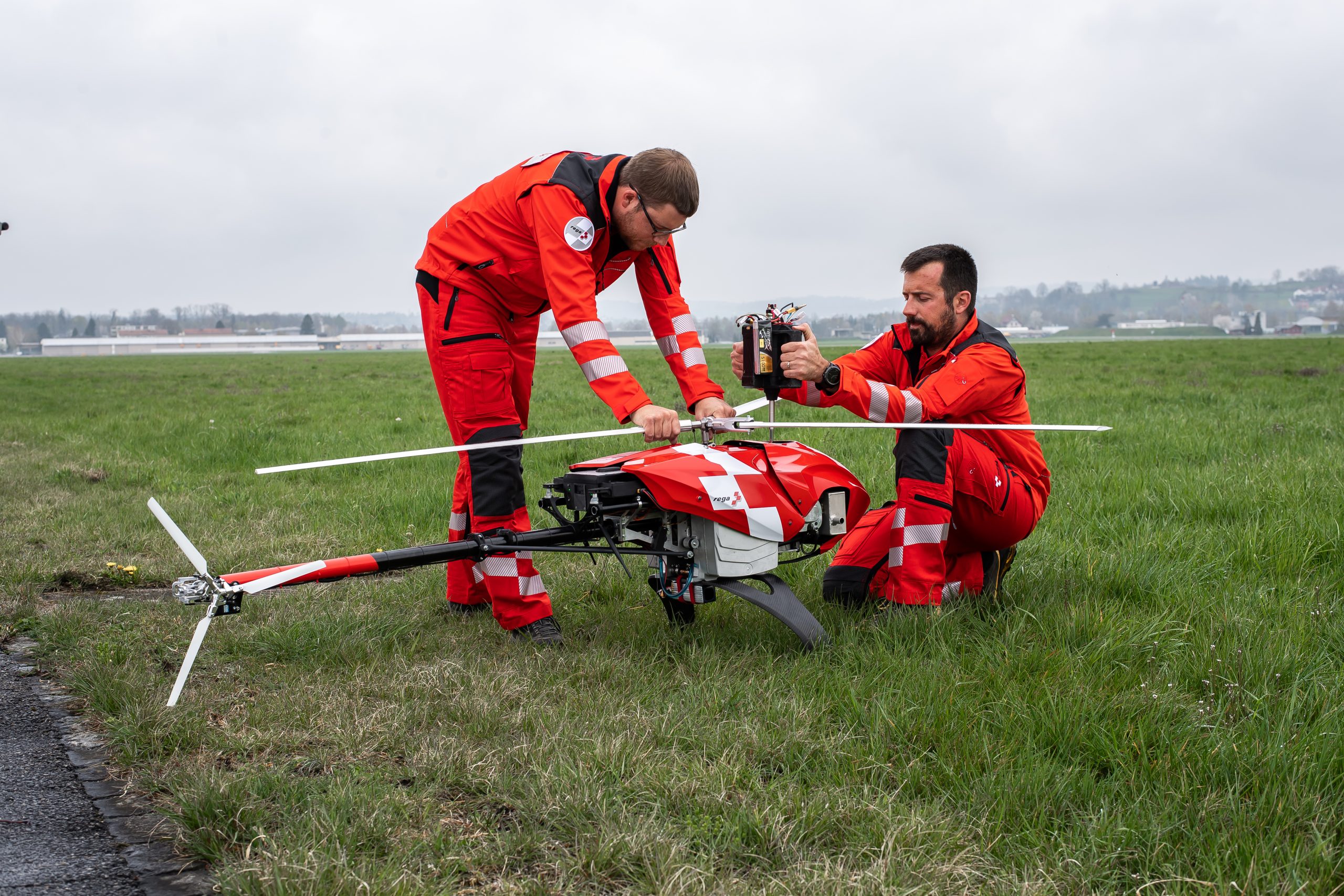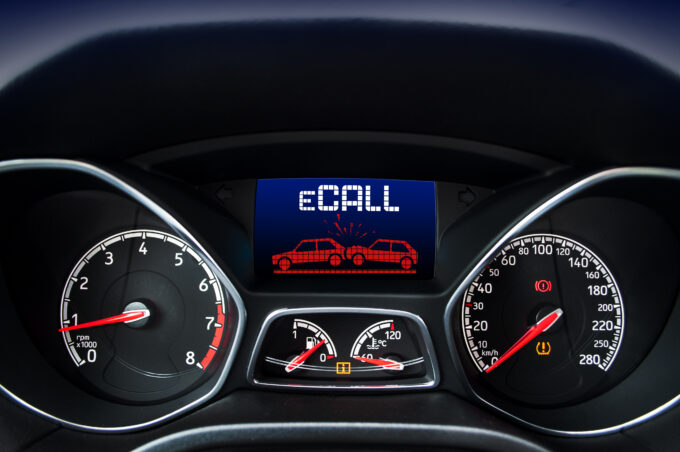People search - Rega relies on drone
Rega is relying on unmanned aerial vehicles to search for missing persons: The newly developed Rega drone is designed to autonomously fly over large-scale search areas. It is equipped with various sensors, such as a thermal imaging camera.

Rega has been working on its own drone project for around one and a half years. In future, the Rega drone is to be used as a supplementary tool in search missions for missing, injured or ill persons, for example if poor visibility makes it impossible to use a helicopter. Such missions will take place in close consultation with other mission partners, in particular the relevant police authorities. Further extensive test flights are scheduled before the drone system can be used in search operations from 2020.
Meaningful expansion of the range of applications
"I am convinced that the Rega drone will once again expand Rega's range of operations," said CEO Ernst Kohler at the annual conference on 12 April. In developing the drone system, Rega was able to draw on its decades of experience from countless search operations. Last year alone, Rega searched for a missing person from the air around 160 times because there was a well-founded suspicion that a person needed help.
"We have followed the development of drone technology since its beginnings and have always been convinced that drones can primarily support search operations," says Sascha Hardegger, Head of Helicopter Operations and project manager. A drone system that meets Rega's requirements does not yet exist on the market. In particular, the possibility of using a relatively small, lightweight and flexible drone over a distance of several kilometers and for several hours of operation without line of sight to the drone pilot does not exist today. "That's why we took the initiative ourselves and developed the Rega drone together with suitable partners," says Hardegger. In the meantime, Rega has been working intensively on its own drone project for around one and a half years, with the aim of soon making this additional means of operation available for search missions.
The drone looks like a mini helicopter
With three rotor blades and a rotor diameter of just over two meters, the new Rega drone looks like a mini-helicopter and outwardly does not have much in common with commercially available multicopter drones. During a search mission, it flies precisely and autonomously over large search areas along a predefined route at an altitude of 80 to 100 meters thanks to satellite navigation. It automatically avoids other aircraft or obstacles such as cables or helicopters. This is ensured by anti-collision systems and numerous pieces of information stored on board, such as terrain models and obstacle databases. The drone is not used over densely populated areas or near airfields. It is also equipped with an emergency parachute.
Sensors on board to locate missing persons
Various sensors on board the drone, including a thermal imaging camera, enable the location of missing persons. Their signals and those of the daylight camera are categorized in real time on board the drone using learning software. This software is being developed in collaboration with ETH Zurich. If the algorithms suspect a person based on the image analysis of a few pixels, the drone immediately transmits this information to the operator on the ground. The search for injured or ill persons will also be supported by the integrated cell phone positioning system: This enables the Rega drone to locate a cell phone in unpopulated areas at a distance of a few hundred meters and thus, with a high degree of probability, to find its owner. The prototype of this device is currently being tested in collaboration with the police, who are responsible for the emergency search for missing persons. Special attention is being paid to the protection of sensitive data.
The drone as a supplement
"Even if the drone itself is unmanned and flies automatically, it requires a well-trained crew consisting of an operator and a pilot to coordinate the search with the various task forces and use the drone sensibly," explains Sascha Hardegger. "Only the interaction of all involved emergency forces on site is promising in difficult searches for persons. In certain cases, the drone will be a good supplement, but not a replacement for the Rega helicopter and its crew. If the search for an injured or ill person is successful, the Rega helicopter or another means of intervention will still be needed in the future to rescue them or bring medical help to the patient."
Source: Rega










